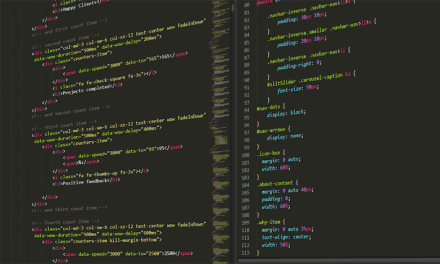Table of Contents
- Introduction
- Diversity and Inclusion Initiatives
- Employee Engagement Strategies
- Talent Acquisition Trends
- Performance Management Best Practices
- Workplace Wellness Programs
- HR Technology Innovations
- Leadership Development Programs
- Legal Updates and Compliance Issues
- Succession Planning Strategies
- Q&A
- Conclusion
“Unlocking the Future of HR: Key Insights from SHRM Conference Chicago 2018”
Introduction
The SHRM Conference in Chicago 2018 provided HR professionals with valuable insights and knowledge to enhance their skills and stay updated on the latest trends in the industry. Key takeaways from the conference included strategies for talent acquisition, employee engagement, diversity and inclusion, and the impact of technology on HR practices. These insights are crucial for HR professionals to effectively navigate the ever-evolving landscape of human resources and drive success within their organizations.
Diversity and Inclusion Initiatives
The Society for Human Resource Management (SHRM) Conference in Chicago 2018 provided valuable insights for HR professionals looking to enhance their diversity and inclusion initiatives within their organizations. With a focus on creating a more inclusive workplace, the conference featured a variety of sessions and speakers that highlighted the importance of diversity and inclusion in today’s workforce.
One key takeaway from the conference was the importance of leadership buy-in when it comes to implementing diversity and inclusion initiatives. Without the support of senior leadership, these initiatives are unlikely to succeed. HR professionals need to work closely with executives to ensure that diversity and inclusion are seen as a priority within the organization.
Another important insight from the conference was the need for ongoing training and education around diversity and inclusion. It’s not enough to simply implement policies and programs – employees need to be educated on why diversity and inclusion are important and how they can contribute to creating a more inclusive workplace. HR professionals can play a key role in developing and delivering training programs that help employees understand the value of diversity and inclusion.
One session at the conference focused on the importance of unconscious bias training in creating a more inclusive workplace. Unconscious bias refers to the stereotypes and prejudices that we hold without even realizing it. By raising awareness of these biases and providing tools to overcome them, HR professionals can help create a more inclusive environment where all employees feel valued and respected.
In addition to training, another key insight from the conference was the importance of measuring the impact of diversity and inclusion initiatives. HR professionals need to track key metrics such as employee engagement, retention rates, and promotion rates to determine the effectiveness of their programs. By collecting and analyzing data, HR professionals can identify areas for improvement and make data-driven decisions to enhance their diversity and inclusion efforts.
One of the most powerful sessions at the conference focused on the experiences of diverse employees within organizations. HR professionals heard firsthand accounts of the challenges that employees from underrepresented groups face in the workplace, as well as the strategies that have helped them succeed. By listening to these stories and incorporating them into their diversity and inclusion initiatives, HR professionals can create a more inclusive environment where all employees can thrive.
Overall, the SHRM Conference in Chicago 2018 provided HR professionals with valuable insights into how they can enhance their diversity and inclusion initiatives. By securing leadership buy-in, providing ongoing training and education, measuring the impact of their programs, and listening to the experiences of diverse employees, HR professionals can create a more inclusive workplace where all employees feel valued and respected. As the workforce continues to become more diverse, it’s essential for organizations to prioritize diversity and inclusion to attract and retain top talent.
Employee Engagement Strategies
The Society for Human Resource Management (SHRM) Conference in Chicago 2018 provided HR professionals with a wealth of knowledge and insights to help them navigate the ever-changing landscape of employee engagement strategies. With the rise of technology and the evolving needs of employees, it is crucial for HR professionals to stay informed and adapt their strategies accordingly.
One key insight from the conference was the importance of creating a culture of trust within the organization. Trust is the foundation of any successful employee engagement strategy, as it fosters open communication, collaboration, and a sense of belonging among employees. HR professionals can cultivate trust by being transparent, listening to employee feedback, and following through on promises. By building trust within the organization, HR professionals can create a positive work environment where employees feel valued and motivated to perform at their best.
Another key insight from the conference was the need for HR professionals to prioritize employee well-being. In today’s fast-paced work environment, employees are facing increasing levels of stress and burnout. HR professionals can support employee well-being by promoting work-life balance, offering wellness programs, and providing resources for mental health support. By prioritizing employee well-being, HR professionals can improve employee engagement, productivity, and retention within the organization.
Additionally, the conference highlighted the importance of recognizing and rewarding employees for their contributions. Employee recognition is a powerful tool for boosting morale, motivation, and engagement. HR professionals can implement recognition programs, such as employee of the month awards, peer-to-peer recognition, and performance bonuses, to show appreciation for employees’ hard work and dedication. By recognizing and rewarding employees, HR professionals can create a positive work culture where employees feel valued and motivated to excel.
Furthermore, the conference emphasized the role of leadership in driving employee engagement. Effective leadership is essential for creating a supportive and inspiring work environment. HR professionals can develop leadership skills among managers and executives through training programs, coaching, and feedback. By empowering leaders to lead by example, communicate effectively, and inspire their teams, HR professionals can foster a culture of engagement and high performance within the organization.
In conclusion, the SHRM Conference in Chicago 2018 provided HR professionals with valuable insights and strategies for enhancing employee engagement within their organizations. By focusing on building trust, prioritizing employee well-being, recognizing and rewarding employees, and developing effective leadership, HR professionals can create a positive work culture where employees feel motivated, valued, and engaged. As the workplace continues to evolve, it is essential for HR professionals to stay informed, adapt their strategies, and prioritize employee engagement to drive organizational success.
Talent Acquisition Trends
The Society for Human Resource Management (SHRM) Conference in Chicago 2018 provided HR professionals with valuable insights into the latest trends in talent acquisition. As organizations continue to compete for top talent in a tight labor market, it is crucial for HR professionals to stay ahead of the curve and adapt their recruitment strategies to attract and retain the best candidates.
One key trend that emerged from the conference is the increasing importance of employer branding in talent acquisition. In today’s digital age, job seekers have access to a wealth of information about potential employers, and they are more likely to choose companies that align with their values and offer a positive work culture. HR professionals need to focus on building a strong employer brand that showcases their organization’s unique culture and values to attract top talent.
Another important trend highlighted at the conference is the growing use of technology in recruitment. From artificial intelligence and machine learning to video interviewing and applicant tracking systems, technology is revolutionizing the way organizations find and hire candidates. HR professionals need to embrace these tools and leverage them to streamline the recruitment process, improve candidate experience, and make data-driven decisions.
In addition to technology, diversity and inclusion were also key themes at the SHRM Conference. As organizations strive to create more diverse and inclusive workplaces, HR professionals play a crucial role in ensuring that their recruitment practices are fair and unbiased. By implementing diversity initiatives, unconscious bias training, and inclusive hiring practices, HR professionals can attract a more diverse pool of candidates and create a more inclusive work environment.
Furthermore, the conference highlighted the importance of data analytics in talent acquisition. By collecting and analyzing data on recruitment metrics such as time to fill, cost per hire, and quality of hire, HR professionals can gain valuable insights into their recruitment process and make informed decisions to improve efficiency and effectiveness. Data-driven recruitment strategies can help organizations identify trends, predict future hiring needs, and measure the impact of their recruitment efforts.
As the labor market continues to evolve, HR professionals must also adapt their recruitment strategies to meet the changing needs of candidates. One emerging trend is the rise of the gig economy, where more workers are seeking flexible, freelance, or temporary work arrangements. HR professionals need to be prepared to attract and retain gig workers by offering competitive compensation, benefits, and opportunities for professional development.
Overall, the SHRM Conference in Chicago 2018 provided HR professionals with valuable insights into the latest trends in talent acquisition. By focusing on employer branding, technology, diversity and inclusion, data analytics, and the gig economy, HR professionals can stay ahead of the curve and attract top talent to their organizations. As the competition for talent continues to intensify, it is essential for HR professionals to continuously evolve their recruitment strategies to meet the changing needs of candidates and ensure the success of their organizations.
Performance Management Best Practices

The Society for Human Resource Management (SHRM) Conference in Chicago 2018 provided HR professionals with a wealth of knowledge and insights on various topics, including performance management best practices. As organizations continue to evolve and adapt to the changing business landscape, it is crucial for HR professionals to stay informed about the latest trends and strategies in performance management.
One key insight from the conference was the importance of setting clear and measurable goals for employees. By establishing specific objectives and key results (OKRs) for each employee, organizations can ensure that everyone is aligned with the company’s overall goals and objectives. This not only helps to improve employee engagement and motivation but also enables managers to provide more effective feedback and coaching.
Another important aspect of performance management discussed at the conference was the need for regular and ongoing feedback. Traditional annual performance reviews are becoming increasingly outdated, as employees and managers alike prefer more frequent and timely feedback. By implementing regular check-ins and one-on-one meetings, organizations can create a culture of continuous feedback and improvement.
Furthermore, the conference highlighted the importance of leveraging technology to enhance performance management processes. From performance management software to real-time feedback tools, there are a variety of technological solutions available to help streamline and automate performance management tasks. By embracing technology, HR professionals can save time and resources while also improving the overall employee experience.
In addition to setting goals, providing feedback, and leveraging technology, the conference also emphasized the importance of employee development and growth. In today’s competitive job market, employees are looking for opportunities to learn and grow within their organizations. By offering training and development programs, organizations can not only improve employee retention but also enhance overall performance and productivity.
Moreover, the conference stressed the importance of recognizing and rewarding employees for their hard work and achievements. Whether through monetary incentives, promotions, or public recognition, it is essential for organizations to show appreciation for their employees’ contributions. By creating a culture of recognition and appreciation, organizations can boost employee morale and motivation.
Overall, the SHRM Conference in Chicago 2018 provided HR professionals with valuable insights and best practices for enhancing performance management within their organizations. By setting clear goals, providing regular feedback, leveraging technology, promoting employee development, and recognizing achievements, organizations can create a culture of high performance and engagement. As the business landscape continues to evolve, it is essential for HR professionals to stay informed and adapt their performance management strategies to meet the changing needs of their employees and organizations.
Workplace Wellness Programs
The Society for Human Resource Management (SHRM) Conference in Chicago 2018 provided HR professionals with a wealth of information and insights to help them navigate the ever-changing landscape of the workplace. One key area of focus at the conference was workplace wellness programs, which have become increasingly popular in recent years as organizations recognize the importance of promoting employee health and well-being.
One of the key insights shared at the conference was the importance of taking a holistic approach to workplace wellness programs. This means looking beyond just physical health and incorporating elements that address mental, emotional, and social well-being as well. Research has shown that employees who feel supported in all aspects of their well-being are more engaged, productive, and loyal to their organizations.
Another important takeaway from the conference was the need for HR professionals to tailor wellness programs to the specific needs and preferences of their employees. This may involve conducting surveys or focus groups to gather feedback on what types of wellness initiatives would be most beneficial and appealing to the workforce. By involving employees in the design and implementation of wellness programs, organizations can increase participation and improve outcomes.
The conference also highlighted the importance of leadership buy-in when it comes to workplace wellness programs. HR professionals need to secure support from senior leaders in order to secure the necessary resources and create a culture that values employee well-being. Leaders who actively participate in wellness initiatives set a positive example for their teams and demonstrate a commitment to creating a healthy work environment.
In addition to leadership buy-in, the conference emphasized the importance of measuring the impact of workplace wellness programs. HR professionals should establish clear goals and metrics to track the effectiveness of their initiatives, such as employee engagement, absenteeism rates, and healthcare costs. By collecting and analyzing data, organizations can identify areas for improvement and make informed decisions about future wellness initiatives.
One of the most exciting trends discussed at the conference was the use of technology to enhance workplace wellness programs. From fitness trackers to mindfulness apps, there are a wide range of digital tools available to help employees track their progress, set goals, and access resources for improving their well-being. HR professionals can leverage technology to make wellness programs more accessible, engaging, and personalized for employees.
Overall, the SHRM Conference in Chicago 2018 provided HR professionals with valuable insights and best practices for designing and implementing effective workplace wellness programs. By taking a holistic approach, tailoring initiatives to employee needs, securing leadership buy-in, measuring impact, and leveraging technology, organizations can create a culture of well-being that benefits both employees and the bottom line. As the workplace continues to evolve, HR professionals must stay informed and proactive in promoting employee health and wellness.
HR Technology Innovations
The Society for Human Resource Management (SHRM) Conference in Chicago 2018 was a gathering of HR professionals from around the world to discuss the latest trends and innovations in the field. One of the key areas of focus at the conference was HR technology, with many sessions dedicated to exploring how technology is transforming the way HR professionals work. Here are some key insights for HR professionals from the SHRM Conference in Chicago 2018.
One of the biggest trends in HR technology is the use of artificial intelligence (AI) and machine learning to streamline HR processes. AI can help HR professionals automate repetitive tasks, such as resume screening and scheduling interviews, freeing up time for more strategic work. Machine learning algorithms can also help HR professionals make better decisions by analyzing data and identifying patterns that may not be immediately apparent.
Another key trend in HR technology is the use of data analytics to drive decision-making. HR professionals can use data analytics to track key metrics, such as employee engagement and turnover rates, and identify areas for improvement. By leveraging data analytics, HR professionals can make more informed decisions that are based on evidence rather than intuition.
Mobile technology is also playing a significant role in HR innovation. With the rise of remote work and flexible schedules, HR professionals need to be able to connect with employees wherever they are. Mobile apps can help HR professionals communicate with employees, track their performance, and provide them with the resources they need to succeed.
One of the challenges facing HR professionals in the digital age is cybersecurity. As more HR processes move online, the risk of data breaches and cyber attacks increases. HR professionals need to be vigilant about protecting sensitive employee information and ensuring that their systems are secure. At the SHRM Conference in Chicago 2018, cybersecurity experts shared best practices for safeguarding HR data and preventing cyber threats.
Another key insight from the SHRM Conference in Chicago 2018 is the importance of employee experience. HR professionals need to focus on creating a positive employee experience that attracts and retains top talent. This includes providing employees with opportunities for growth and development, recognizing their achievements, and fostering a culture of inclusivity and diversity.
Overall, the SHRM Conference in Chicago 2018 highlighted the importance of embracing technology to drive HR innovation. By leveraging AI, data analytics, mobile technology, and cybersecurity best practices, HR professionals can streamline their processes, make better decisions, and create a positive employee experience. As the field of HR continues to evolve, staying up-to-date on the latest technology trends will be essential for success.
Leadership Development Programs
The Society for Human Resource Management (SHRM) Conference in Chicago 2018 provided HR professionals with a wealth of knowledge and insights to help them excel in their roles. One key area of focus at the conference was leadership development programs. These programs are essential for organizations looking to cultivate and retain top talent, as well as drive business success.
One of the key insights shared at the conference was the importance of aligning leadership development programs with the overall business strategy. HR professionals were encouraged to work closely with senior leadership to understand the organization’s goals and objectives, and then tailor leadership development initiatives to support these goals. By aligning leadership development with the business strategy, organizations can ensure that their leaders are equipped to drive the company forward and achieve long-term success.
Another key takeaway from the conference was the importance of providing ongoing support and coaching for leaders participating in development programs. Leadership development is not a one-time event, but rather a continuous process that requires ongoing feedback, support, and guidance. HR professionals were encouraged to implement coaching and mentoring programs to help leaders develop the skills and competencies needed to succeed in their roles. By providing this support, organizations can ensure that their leaders continue to grow and evolve, ultimately benefiting the entire organization.
The conference also highlighted the importance of leveraging technology to enhance leadership development programs. HR professionals were encouraged to explore the use of online learning platforms, virtual coaching tools, and other technology-driven solutions to make leadership development more accessible and effective. By incorporating technology into their programs, organizations can reach a wider audience, provide more personalized learning experiences, and track the impact of their leadership development initiatives.
In addition to these insights, the conference also emphasized the importance of diversity and inclusion in leadership development programs. HR professionals were encouraged to ensure that their programs are accessible to all employees, regardless of their background or identity. By fostering a diverse and inclusive leadership pipeline, organizations can tap into a wider range of perspectives and experiences, ultimately driving innovation and success.
Overall, the SHRM Conference in Chicago 2018 provided HR professionals with valuable insights and best practices for designing and implementing effective leadership development programs. By aligning programs with the business strategy, providing ongoing support and coaching, leveraging technology, and promoting diversity and inclusion, organizations can cultivate strong leaders who are equipped to drive success in today’s rapidly changing business environment. As HR professionals continue to refine and enhance their leadership development initiatives, they will play a crucial role in shaping the future of their organizations and driving sustainable growth and success.
Legal Updates and Compliance Issues
The Society for Human Resource Management (SHRM) Conference in Chicago 2018 provided HR professionals with a wealth of information on legal updates and compliance issues. With the ever-changing landscape of employment laws and regulations, staying informed is crucial for HR professionals to ensure their organizations remain compliant and avoid costly legal pitfalls.
One key insight from the conference was the importance of keeping up-to-date with changes in federal, state, and local employment laws. With new laws being passed and existing laws being amended regularly, HR professionals must be vigilant in monitoring these changes to ensure their organizations are in compliance. This includes staying informed on issues such as minimum wage laws, overtime regulations, anti-discrimination laws, and employee leave policies.
Another important takeaway from the conference was the need for HR professionals to have a solid understanding of the legal implications of various HR practices. This includes knowing how to properly handle employee discipline, terminations, and workplace investigations to avoid potential legal challenges. HR professionals should also be well-versed in the legal requirements for hiring practices, including conducting background checks, drug testing, and verifying employment eligibility.
One of the hot topics discussed at the conference was the #MeToo movement and its impact on workplace harassment policies. HR professionals were reminded of the importance of creating a safe and inclusive work environment for all employees, and the need to take swift and appropriate action in response to harassment allegations. This includes conducting thorough investigations, providing support to victims, and taking steps to prevent future incidents of harassment.
In addition to legal updates and compliance issues, the conference also highlighted the importance of data privacy and security in HR practices. With the increasing use of technology in HR functions, such as online recruiting platforms and employee data management systems, HR professionals must be mindful of the potential risks associated with storing and sharing sensitive employee information. This includes ensuring compliance with data privacy laws, implementing secure data storage practices, and providing training to employees on data security best practices.
Overall, the SHRM Conference in Chicago 2018 provided HR professionals with valuable insights into the legal updates and compliance issues that are shaping the HR landscape. By staying informed on changes in employment laws, understanding the legal implications of HR practices, and prioritizing data privacy and security, HR professionals can help their organizations navigate the complex legal environment and mitigate potential risks. As the role of HR continues to evolve, staying informed and proactive in addressing legal issues will be essential for success in the field.
Succession Planning Strategies
The Society for Human Resource Management (SHRM) Conference in Chicago 2018 provided HR professionals with a wealth of knowledge and insights to help them navigate the ever-changing landscape of human resources. One key area of focus at the conference was succession planning strategies, which are crucial for ensuring the long-term success of an organization. Succession planning involves identifying and developing future leaders within the organization to ensure a smooth transition when key employees leave or retire.
One of the key insights shared at the conference was the importance of starting succession planning early. Many organizations make the mistake of waiting until a key employee announces their retirement or departure before beginning the succession planning process. However, by that point, it may be too late to adequately prepare a successor. HR professionals were advised to identify high-potential employees early on and provide them with the necessary training and development opportunities to prepare them for future leadership roles.
Another important aspect of succession planning discussed at the conference was the need for a formalized process. Succession planning should not be left to chance or handled on an ad-hoc basis. Instead, organizations should have a structured process in place that outlines how potential successors will be identified, developed, and evaluated. This process should be regularly reviewed and updated to ensure its effectiveness.
One of the challenges HR professionals face when it comes to succession planning is identifying the right candidates for future leadership roles. It can be difficult to predict which employees will excel in leadership positions, especially if they have not had the opportunity to demonstrate their potential. To address this challenge, HR professionals were encouraged to use a combination of objective assessments, performance evaluations, and feedback from managers to identify high-potential employees.
In addition to identifying potential successors, HR professionals were also advised to focus on developing their leadership skills. This includes providing them with opportunities to take on new challenges, receive mentoring and coaching, and participate in leadership development programs. By investing in the development of future leaders, organizations can ensure a smooth transition when key employees leave or retire.
Another key insight shared at the conference was the importance of communication in succession planning. HR professionals were reminded that succession planning is not just about identifying and developing future leaders; it also involves communicating with key stakeholders, including current employees, managers, and senior leaders. By keeping employees informed about the organization’s succession planning efforts, HR professionals can help alleviate concerns and build trust within the organization.
Overall, the SHRM Conference in Chicago 2018 provided HR professionals with valuable insights and strategies for effective succession planning. By starting early, formalizing the process, identifying and developing potential successors, and communicating effectively, organizations can ensure a smooth transition when key employees leave or retire. Succession planning is a critical component of organizational success, and HR professionals play a key role in ensuring its effectiveness.
Q&A
1. What were some key insights for HR professionals from the SHRM Conference in Chicago 2018?
– The importance of employee engagement and retention strategies.
2. How can HR professionals improve employee engagement?
– By focusing on creating a positive work culture and providing opportunities for growth and development.
3. What were some trends discussed at the conference?
– The impact of technology on HR practices and the importance of diversity and inclusion.
4. How can HR professionals address the challenges of technology in the workplace?
– By staying informed about new technologies and adapting HR practices accordingly.
5. What strategies were recommended for improving diversity and inclusion?
– Implementing unconscious bias training and creating diverse hiring practices.
6. How can HR professionals stay updated on industry trends?
– By attending conferences, networking with other professionals, and staying informed through industry publications.
7. What role does HR play in organizational success?
– HR plays a crucial role in recruiting and retaining top talent, developing employee skills, and fostering a positive work environment.
8. How can HR professionals measure the success of their initiatives?
– By tracking key metrics such as employee turnover rates, engagement levels, and performance reviews.
9. What were some key takeaways for HR professionals from the conference?
– The importance of staying agile in a rapidly changing business environment and the need to prioritize employee well-being and development.
Conclusion
Key insights for HR professionals from SHRM Conference in Chicago 2018 include the importance of employee engagement, diversity and inclusion, technology in HR, and the impact of AI on the workforce. These topics were discussed in various sessions and workshops, providing valuable information and strategies for HR professionals to implement in their organizations.
In conclusion, the SHRM Conference in Chicago 2018 offered HR professionals a wealth of knowledge and resources to stay current and competitive in the ever-evolving field of human resources. By focusing on employee engagement, diversity and inclusion, technology, and the future of AI in the workforce, HR professionals can better support their organizations and drive positive change within their teams.





